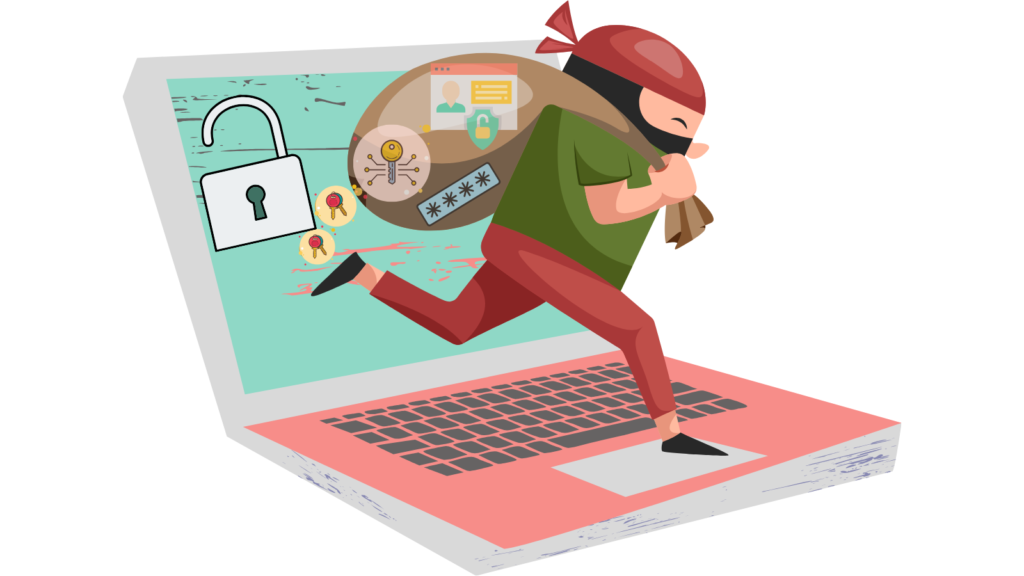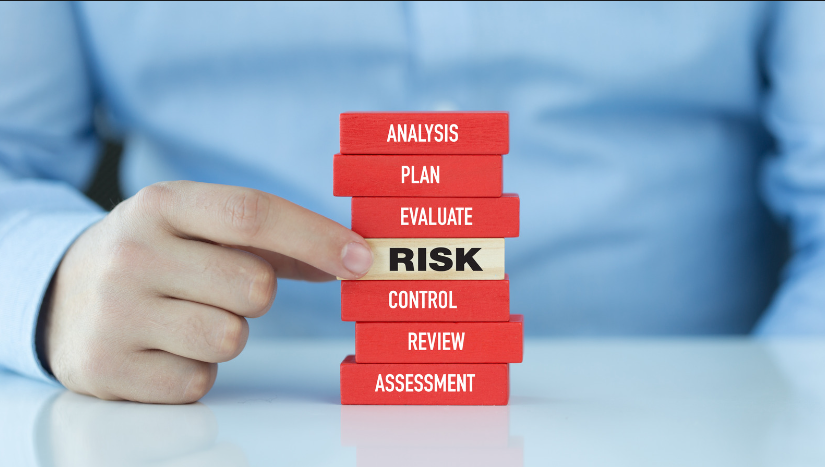In the bustling landscape of 2024, small and medium-sized businesses (SMBs) and medium-sized businesses (MBS) navigate a world where uncertainty is everywhere.
From unexpected cyber-attacks to supply chain disruptions, businesses face various challenges that threaten their operations.
However, amidst this unpredictability, lies an opportunity for SMBs and MBS to thrive through strategic preparation.

From simplified data backup solutions to agile crisis management plans, we’ll explore practical techniques to help SMBs and MBS not only survive but flourish in the face of adversity. According to a global survey by Statista, 25% of respondents reported an average hourly downtime cost for their servers between $301,000 and $400,000.
Get ready to unlock the secrets to success in an ever-changing world with these top 8 disaster recovery strategies that you cannot miss out on, in 2024.
What Do You Understand By Disaster Recovery Strategies?
Disaster recovery strategies in the realm of cybersecurity involve proactive measures to protect against and respond to cyber threats. These strategies encompass not only safeguarding data and systems but also preparing for the potential aftermath of a cyber-attack.

Robust cybersecurity disaster recovery plans include regular data backups, encryption protocols, and intrusion detection systems to prevent breaches. In today’s digital age, where cyber threats loom large, implementing comprehensive disaster recovery strategies is essential for businesses to mitigate risks and safeguard their digital assets and reputation.
1. Data Backup and Replication
Data Backup and Replication strategy is about keeping copies of your important information in a safe place away from where you usually keep it. Imagine you have a special album of photos; you wouldn’t want to lose those memories if something bad happened, like a fire or flood. So, you make extra copies and keep them in another house or somewhere safe online. This way, if something goes wrong, you can still get back those important photos.
Key Features of Data Backup and Replication:
- Regular Backups: Make sure that copies of data are created consistently and frequently.
- Offsite and Cloud Storage: Keeping backups in different locations, away from the main office, or using online services so they’re safe from local disasters.
- Data Replication: Making live copies of data to another location, so if one set of data is lost, the other can take over immediately without any loss.
- Automated Processes: Using software that automatically takes care of making and updating these backups, reducing the chance of human error.

How the Strategy Can Help:
Challenge 1: Natural Disaster: If a flood damages your office, all computers and servers could be lost.
Solution: Having data backed up in the cloud means you can still access all your important documents and information from any computer with internet access, helping your business to keep running.
Challenge 2: Ransomware Attack: If hackers lock your files and demand money to unlock them, having separate, recent backups means you can restore your data without paying the ransom.
Solution: Data Backup and Replication keeps your information safe and your business operational.
Challenge 3: Accidental Deletion: Someone accidentally deletes a crucial project file.
Solution: With regular backups, you can recover the deleted file without losing significant progress, ensuring that a simple mistake doesn’t lead to a major setback for your project.
2. Disaster Recovery Planning
Disaster Recovery Planning involves making a plan for what to do when things go wrong. It’s like when you plan a road trip; you decide where you want to go, how you’ll get there, and what you’ll do if you run into problems along the way. Similarly, this strategy involves thinking about all the bad things that could happen to your business, like cyber-attacks or natural disasters, and then writing down a clear set of steps on how to keep your business running during those times.
Key Features of Disaster Recovery Planning:
- Detailed Procedures: Write down every step needed to recover from different types of disasters.
- Roles and Responsibilities: Clearly stating who does what in a disaster, ensuring everyone knows their tasks.
- Regular Updates and Testing: The plan isn’t set in stone; it’s reviewed and practiced often to make sure it works and stays up to date with new business changes or technologies.
- Emergency Contacts and Resources: Keeping a list of important contacts and resources needed during a disaster, like IT support numbers and backup site locations.

How the Strategy Can Help:
Challenge 1: Power Outage: A major power outage hits your area, affecting your main office.
Solution: Your disaster recovery plan includes steps for switching operations to a remote site and using backup generators. This ensures that critical business functions continue with minimal downtime.
Challenge 2: Data Breach: Your company’s data is accessed by unauthorized individuals.
Solution: The disaster recovery plan includes immediate actions to secure data, assess the damage, and communicate with affected parties responsibly. This structured response helps mitigate the impact of the breach and maintain trust with your customers.
Challenge 3: Equipment Failure: Key servers fail unexpectedly.
Solution: The disaster recovery plan outlines how to quickly switch to backup systems and how to repair or replace the faulty equipment. This ensures that your business services remain online, preventing significant losses and maintaining service continuity for your customers.
3. Business Impact Analysis (BIA)
Business Impact Analysis (BIA) is like making a list of what’s most important to keep your business running and figuring out how to protect those parts first. Imagine you’re packing for a camping trip, but your car can only carry so much. You’d need to choose the most important items to bring, like food and a tent, before anything else. This strategy does something similar for your business by identifying which parts are absolutely essential and making sure they stay safe during a disaster, like a big storm or a computer virus attack.
Key Features of Business Impact Analysis (BIA):
- Identifying Critical Functions: Finding out which business activities are most important for the business to keep running.
- Assessing Impact: Looking at what could happen if these activities were stopped or disrupted.
- Recovery Prioritization: Deciding which functions need to be restored first to minimize losses.
- Resource Requirements: List what resources (like equipment, information, and people) are needed to continue these critical functions.

How the Strategy Can Help:
Challenge 1: Server Crash: Your main server crashes, taking down your online ordering system.
Solution: Through BIA, you know this system is critical because it’s how most of your customers place orders. You’ve already set up a backup server that can take over, minimizing downtime and keeping sales going.
Challenge 2: Supply Chain Disruption: A key supplier is unable to deliver materials due to a natural disaster.
Solution: Your BIA has already identified alternative suppliers for critical materials, allowing you to switch quickly and keep your production lines running without significant delays.
Challenge 3: Cyber Attack on Customer Data: Hackers target your customer database.
Solution: The BIA has shown that protecting customer trust is critical, so you’ve invested in advanced security measures and have a response plan ready. This allows you to quickly secure the data, assess and mitigate any damage, and communicate transparently with your customers, thus preserving their trust and loyalty.
4. Infrastructure Redundancy
Infrastructure Redundancy is about having extra copies of important parts of your business so you can keep going even if something breaks. Think of it like having spare tires in your car. If one tire pops, you can quickly replace it and keep driving. Similarly, this strategy involves having extra computers, servers, or even power sources ready. So, if one part stops working because of a disaster like a fire, flood, or technical failure, you can switch to the spare and keep your business running smoothly.
Key Features of Infrastructure Redundancy:
- Multiple Copies: Keeping several copies of important systems and data, so that if one fails, others can take its place.
- Diverse Locations: Placing these copies in different places. If one location is affected by a disaster, the others can still work.
- Automatic Failover: Setting up systems so that if one fails, another automatically starts working without needing someone to fix it right away.
- Regular Testing: Checking these backup systems regularly to make sure they work when needed.
How the Strategy Can Help:
Challenge 1: Earthquake Damages Office Building: An earthquake damages the main office where your servers are located.
Solution: However, you have identical servers in another city that immediately take over, keeping your website and online services running without interruption.
Challenge 2: Power Failure in Data Center: The data center hosting your servers experiences a complete power failure.
Solution: Thanks to your redundant power supplies, including battery backups and generators, your servers remain operational, and your data remains accessible, avoiding any downtime for your critical services.
Challenge 3: Network Outage: A construction accident cuts off your main internet connection.
Solution: You have a secondary internet connection from a different provider that automatically kicks in, ensuring your employees and customers experience no disruption in service. This redundancy keeps your business connected to the internet, maintaining access to cloud services and online resources.
5. Cloud-Based Recovery Solutions
Cloud-based recovery solutions are like keeping a copy of your important stuff in the cloud, which is someone else’s computer that you can access from anywhere. Imagine you’re drawing a beautiful picture, but then your paper gets ripped. If you had taken a photo and uploaded it online, you could just print out a new one and keep going. This strategy works the same way for your business. You keep all your important data and computer systems on the internet, so if something bad happens, like your office getting flooded or computers getting stolen, you can still get to your stuff from anywhere and keep your business running.
Key Features of Cloud-Based Recovery Solutions:
- Flexibility: You can choose exactly how much storage or computing power you need and change it as your business grows.
- Cost-Effective: Often, you only pay for what you use, which can save money compared to maintaining your disaster recovery systems.
- Quick Recovery: Since everything is online, you can get your systems back up and running very quickly after a disaster.
- Security: Cloud providers invest heavily in security measures to protect your data from hackers and other threats.
How the Strategy Can Help:
Challenge 1: Sudden Office Closure: Due to unexpected events like a severe weather warning, your office needs to close immediately.
Solution: With cloud-based recovery solutions, your team can work from home or any location with internet access, accessing all necessary systems and data stored in the cloud, ensuring business continuity without physical access to the office.
Challenge 2: Hardware Theft: Over a weekend, burglars break into your office and steal computers and servers.
Solution: While the physical hardware is gone, all your data and software hosted in the cloud are untouched. You can quickly set up new machines and access everything from the cloud, minimizing downtime and data loss.
Challenge 3: Rapid Scaling Needed: Your business suddenly needs to handle a huge increase in online orders, more than your current servers can support.
Solution: With cloud-based solutions, you can quickly scale up your computing resources to meet the demand without any delay in ordering new hardware, ensuring you can keep up with customer demand and maximize sales opportunities.
6. Regular Testing and Drills
Regular testing and drills involve practicing what to do if something goes wrong, just like how firefighters train to put out fires. It’s like having a fire drill at school; everyone knows what to do if there’s a fire because they’ve practiced it before. This strategy helps your business be ready for disasters by regularly practicing the steps you would take to keep things running smoothly, even when things are chaotic.
Key Features of Regular Testing and Drills:
- Scenario Simulations: Creating realistic disaster scenarios and practicing how to respond to each one.
- Employee Training: Making sure everyone knows their role and how to carry out the recovery plan effectively.
- Identifying Weaknesses: Finding any problems or gaps in the plan during practice sessions so they can be fixed before a real disaster happens.
- Improvement Opportunities: Using feedback from drills to improve the recovery plan and make it more effective.
How the Strategy Can Help:
Challenge 1: Cybersecurity Breach: Your company faces a simulated cyber attack during a drill.
Solution: This allows your IT team to practice identifying and mitigating the breach quickly, minimizing the potential damage and ensuring that similar attacks in the future can be handled effectively.
Challenge 2: Natural Disaster Preparedness: During a scheduled drill, a scenario of a severe storm hitting your area is simulated.
Solution: This allows your employees to practice evacuating the office safely and setting up temporary work arrangements, ensuring that everyone knows what to do if a real storm occurs.
Challenge 3: Supply Chain Disruption: In a drill, a scenario where a key supplier goes out of business is simulated.
Solution: This allows your procurement team to practice quickly finding alternative suppliers and adjusting supply chain processes to minimize disruption to your business operations.
7. Incident Response Team
An incident response team involves having a dedicated team of people whose job is to respond quickly and effectively to any disaster that affects the business. It’s like having a team of superheroes ready to swoop in and save the day whenever something bad happens. This strategy helps ensure that there’s always someone in charge of coordinating the response to a disaster, making sure that everything gets fixed as soon as possible and that everyone knows what they need to do.
Key Features of Incident Response Team:
- Designated Roles: Assigning specific responsibilities to team members so that everyone knows what they should be doing during a disaster.
- 24/7 Availability: Ensuring that the team is always available to respond to emergencies, even outside of regular working hours.
- Training and Drills: Providing regular training and conducting drills to keep the team prepared and ready to respond effectively.
- Coordination with Stakeholders: Working closely with other teams within the organization, as well as external partners, to coordinate the response effort and ensure a unified approach.
 \
\
How the Strategy Can Help:
Challenge 1: Data Breach: Your company experiences a data breach, and sensitive information is compromised.
Solution: The incident response team immediately springs into action, isolating the affected systems, conducting forensic analysis, and implementing measures to contain the breach and mitigate further damage, thus minimizing the impact on the business and protecting customer data.
Challenge 2: Facility Fire: A fire breaks out in one of your company’s facilities.
Solution: The incident response team coordinates with emergency services, evacuates employees safely, and assesses the damage. They then develop and execute a plan to relocate critical operations to alternative sites, ensuring business continuity despite the physical damage to the facility.
Challenge 3: Product Recall: A serious flaw is discovered in one of your company’s products, necessitating a large-scale recall.
Solution: The incident response team immediately mobilizes to manage communication with customers, coordinate the recall process, and implement corrective measures to prevent similar issues in the future, safeguarding the company’s reputation and minimizing financial losses.
8. Communication Plan
Communication Plan involves having a clear plan for how to communicate with everyone involved during and after a disaster. It’s like making sure everyone knows what’s happening during a school play; the actors know their lines, the stage crew knows when to change the scenery, and the audience knows when to clap. Similarly, this strategy ensures that everyone, including employees, customers, suppliers, and the public, receives timely and accurate information about the disaster and how it’s being addressed, which helps reduce confusion and panic.
Key Features of Communication Plan:
- Stakeholder Identification: Identifying all parties that need to be communicated with during a disaster, including internal and external stakeholders.
- Communication Channels: Determining the most effective channels for communicating with each stakeholder group, such as email, phone, social media, or public announcements.
- Crisis Messaging: Developing pre-approved messages that can be quickly disseminated to provide updates and instructions during a disaster.
- Designated Spokespersons: Assigning specific individuals or teams to act as official spokespeople and interface with the media and other external parties.
How the Strategy Can Help:
Challenge 1: Cybersecurity Incident: Your company experiences a cyber attack that compromises customer data.
Solution: The communication plan kicks in, ensuring that affected customers are promptly notified of the breach, provided with instructions on protecting their information, and reassured about the steps being taken to address the issue, thus maintaining trust and transparency.
Challenge 2: Natural Disaster Impact: A severe storm causes widespread damage in your company’s operating area.
Solution: The communication plan helps keep employees informed about safety measures, updates on office closures or alternate work arrangements, and instructions for accessing resources and support services. It also enables timely communication with customers and suppliers regarding service disruptions and recovery timelines.
Challenge 3: Product Recall: A safety issue prompts a product recall.
Solution: The communication plan ensures that affected customers are notified promptly, provided with clear instructions on returning or replacing the product, and informed about any potential risks. Transparent communication helps mitigate reputational damage and maintains customer loyalty by demonstrating the company’s commitment to consumer safety and satisfaction.
Conclusion
As we step into 2024, the landscape for small and medium-sized businesses (SMBs) and medium-sized businesses (MBS) continues to evolve with new challenges and opportunities. The year 2023 has taught us valuable lessons about the importance of being prepared for the unpredictable, especially in the realm of disaster recovery.
Click here, to know more about SOC.









